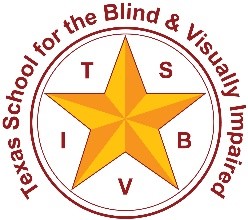Before You Begin a Calendar
Not every child who is deafblind or visually and multiply impaired is ready to use a calendar. Before a calendar can be meaningful for a child, they have to have a day of predictable activities to serve as anchors or markers for the passage of time.
Develop a Schedule

Many students will have this type of predictable events at home where the family goes through activities at roughly the same time and same sequence each day. For example, eating breakfast, getting ready for the day, bath time, bedtime, etc. However, when the student comes to school there may not be a menu of predictable activities in place yet. The student may feel overwhelmed by simply being in a new place with new people. So begin where the child is. Take the time to develop a relationship and interaction style with the child. Take time to find out and note what the child likes and dislikes. See how the child uses his/her body and senses and how movement is possible for the child.
Create Motivating and Necessary Routines

Use this information to help create routine ways of doing activities that focus first on events that must take place each day. For example, toileting, eating, traveling to and from school. Blend in activities that are fun and highly preferred by the student. This could include both activities with a trusted adult or favorite peer as well as time to play independently in a rich learning environment. Make these activity times as routine and predictable as possible. This will create a daily schedule for the child that can be carried out daily.
Instructional Strategies Menu
- Assessment
- Communication Overview
- Calendars
- Time Concepts
- Sequencing
- Using Calendars to Expand Concepts
- Calendars Support Social Interaction
- A Form of Literacy
- Before You Begin a Calendar
- Anticipation
- Daily
- Weekly
- Monthly
- Timelines
- Choice-making
- Concept Development & Experiential Learning
- Interaction and Bonding
- Factors to Consider
- Avoid Pitfalls
- Hand Under Hand
- Building Security
- Imitative Play Strategies
- Turn-taking Play Strategies
- Be a Good Playmate
- Use Interaction to Teach
- Additional Resources
- Routines
- Experiencing Routines
- Literacy Related to Routines
- Turn-taking Games
- Level 1 Routines (Sharing the Work)
- Level 2 Routines (Participation with Support)
- Level 3 Routines (Independent)
Static and Dynamic Communication
Determine the appropriate static and dynamic communication forms that the child will recognize to represent each activity. As much as possible look to the child to see what object has the most meaning in representing the whole activity. For example, does the child associate a spoon or a favorite cup with eating?
Location

Determine where the calendar be located and how it will be set up according to your student’s needs. It is very important that the student knows where the calendar is and can get to the calendar on his/her own. It should be designed so that the student can reach the object symbols as well as the anticipation calendar containers. Once the calendar is set up you may want to start and end the day there using the containers that will become an anticipation level calendar to note the travel to and from school. This will help prepare the child for calendar conversations when you get ready to introduce his/her first calendar.
Introduce Symbols to Transition to Next Activity
Once you have a schedule and some routines, begin to introduce the next activity by presenting the symbol in the “now” container briefly before doing the activity. The child may not be ready to go to his/her calendar space at first, so be prepared to present the symbol to the child wherever he is before going to the place where the next activity will take place. It should begin to make that transition easier if the child begins to anticipate what is next when receiving the symbol.

